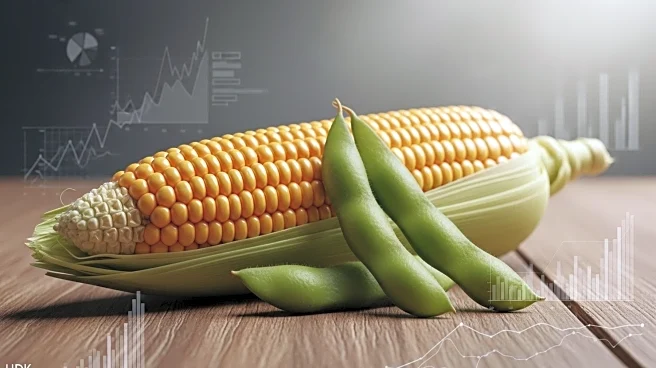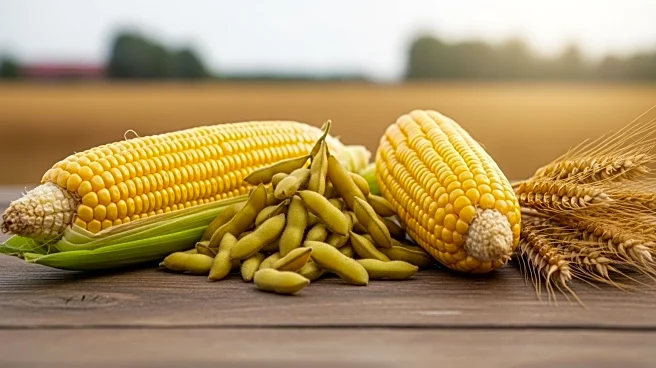What is the story about?
What's Happening?
November soybean futures are currently trading near $10.35, facing vulnerability due to a projected carryout of 290 million bushels, as estimated by the USDA World Agricultural Supply and Demand Estimates report. The market is experiencing uncertainty with a record yield forecast of 53.6 bushels per acre, which may not materialize due to disease issues and weather conditions. Traders are divided, with bullish forecasts suggesting potential price increases if carryout drops below 200 million bushels, while bearish forecasts anticipate price declines due to high yield and trade challenges.
Why It's Important?
The volatility in soybean futures is crucial for U.S. agriculture, impacting farmers, traders, and the broader economy. A decrease in carryout could lead to higher prices, benefiting producers but potentially increasing costs for consumers and industries reliant on soybeans. Conversely, a high yield and trade issues could lead to lower prices, affecting farmers' profitability and market stability. The situation underscores the importance of strategic marketing decisions and risk management for stakeholders in the soybean industry.
What's Next?
Farmers and traders are advised to approach soybean marketing with a balanced strategy, considering both bullish and bearish scenarios. Options such as selling cash and retaining ownership through paper, or purchasing put options, are recommended to manage price risks. The upcoming USDA report and weather conditions will be critical in determining future price movements, and stakeholders will need to stay informed and adaptable to market changes.
AI Generated Content
Do you find this article useful?














